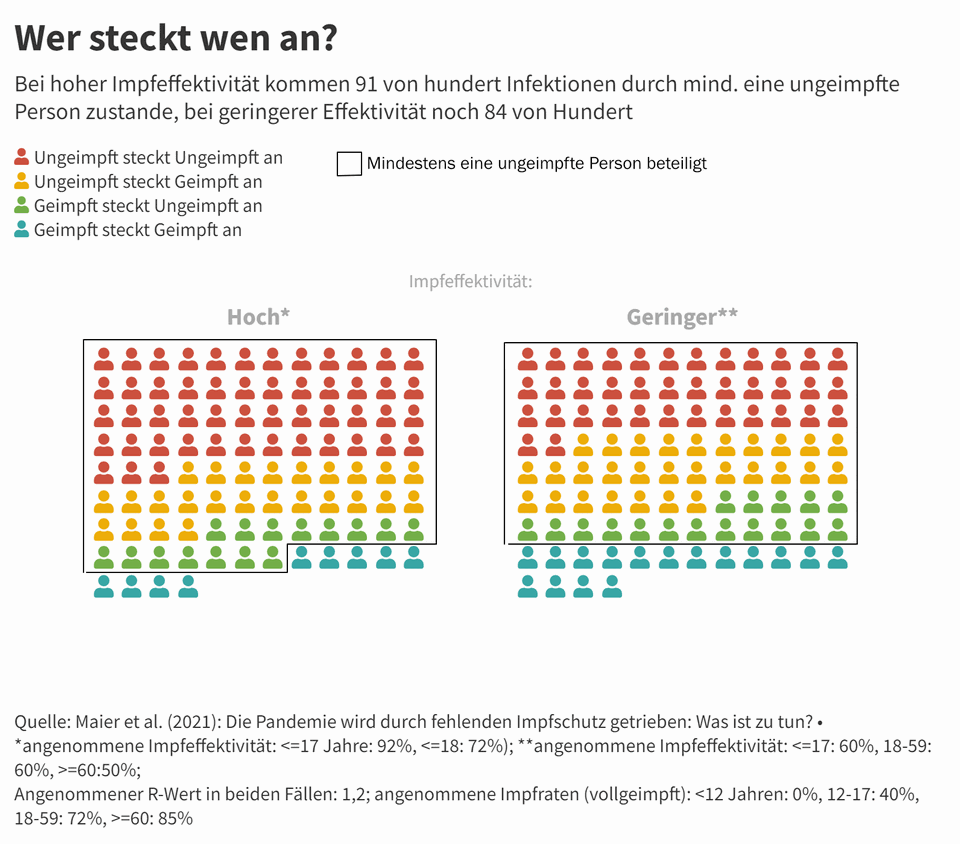Who infects whom?
Calculations show: Unvaccinated people are involved in up to nine out of ten corona infections
How many infections are unvaccinated people involved in? You can find a detailed graphic in the article below
© dpa / Karl-Josef Hildenbrand; Graphics: stern / Picture Alliance
Scientists in Berlin have examined the proportion of people who have not been vaccinated in corona infections. They derived specific recommendations for action from the results.
On the basis of a mathematical contagion model, scientists from Berlin’s Humboldt University have determined how many corona infections at least one unvaccinated person is involved. “There is scientific uncertainty about the actual effectiveness of the vaccination,” write the scientists led by Humboldt Professor Dirk Brockmann, who heads the “Epidemiological Modeling of Infectious Diseases” project group at the Robert Koch Institute. For this reason, the scientists based their calculations on two scenarios, one with a higher effectiveness of the vaccines, one with a lower effectiveness (see also the infographic below). When modeling, they based their estimates on effectiveness data from Germany (higher) and Great Britain (lower).
The team put the R-value at 1.2 in both scenarios. The vaccination rate in both scenarios was around 66 percent across all age groups. The R value and vaccination quota in the model were thus roughly at the level of the actual values in Germany in October and November 2021.
Infographic: Corona infections by vaccinated and unvaccinated people
The summarized result: According to the calculations, at least one unvaccinated person is involved in eight to nine out of ten infections. The more effective the vaccination protection, the fewer infections are caused by vaccinated people. The details are visualized in the infographic below:

© star / rös
The vaccination rates in German-speaking countries are currently far too low to effectively contain the virus, the authors state. Since vaccinations are one of the most effective means of fighting pandemics, one of their recommendations is to effectively increase the vaccination rate. Additional measures are necessary for this. In addition, an increase in vaccination effectiveness is required, for example through booster vaccinations. The scientists also continue to consider a reduction in contacts to be necessary, especially among those who have not been vaccinated. The latter, however, mainly to break the current wave, since an increase in the vaccination rate will only have an effect in the medium term.
Source: Maier et al, 2021 (Humboldt University Berlin)
In the gallery: The coronavirus variant, first discovered in South Africa, is appearing in more and more countries and is putting governments around the world on alert. Where Omikron has already arrived – an overview.


